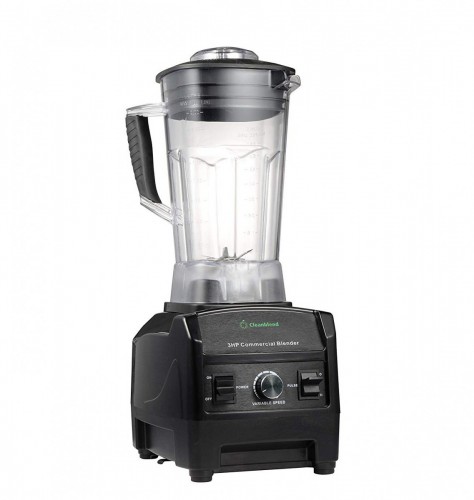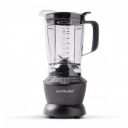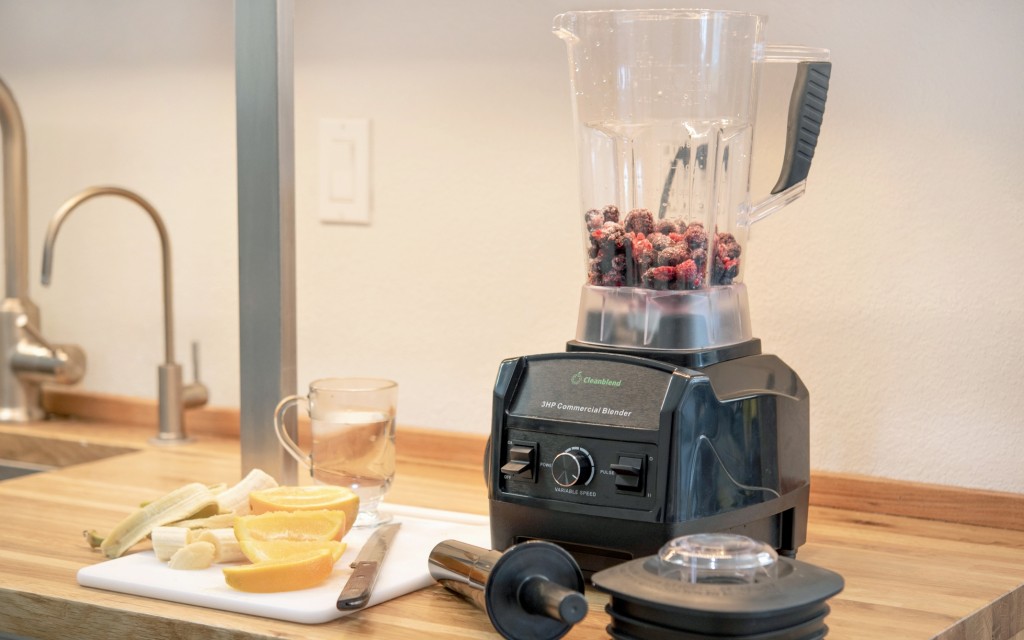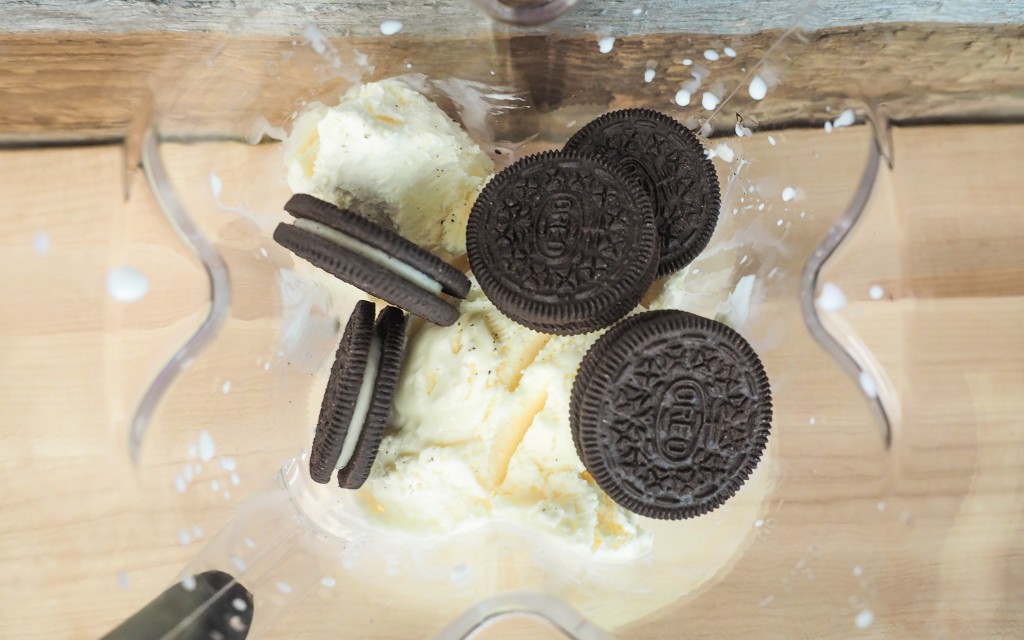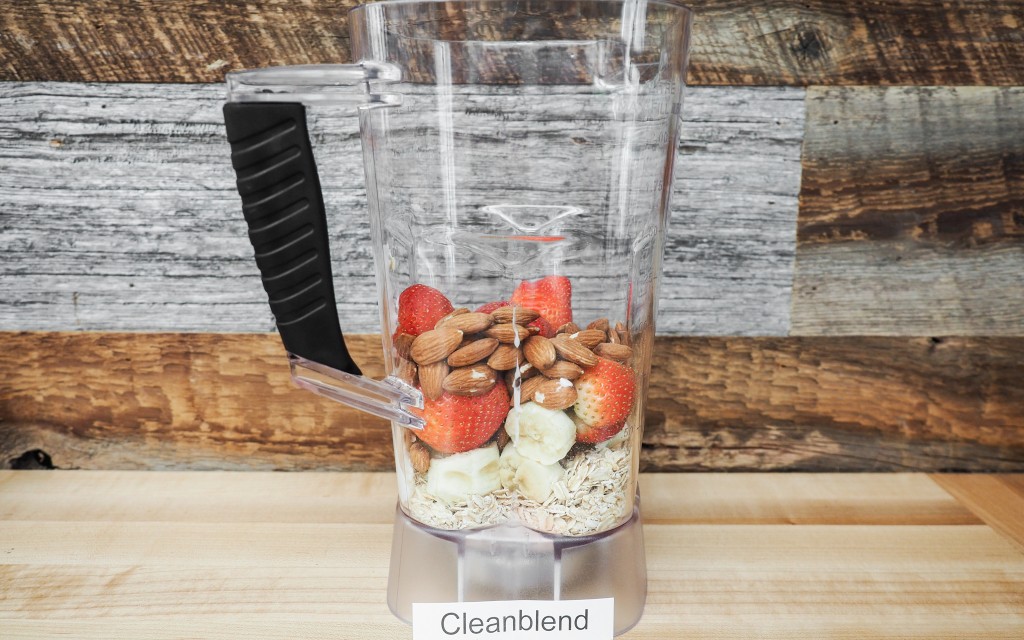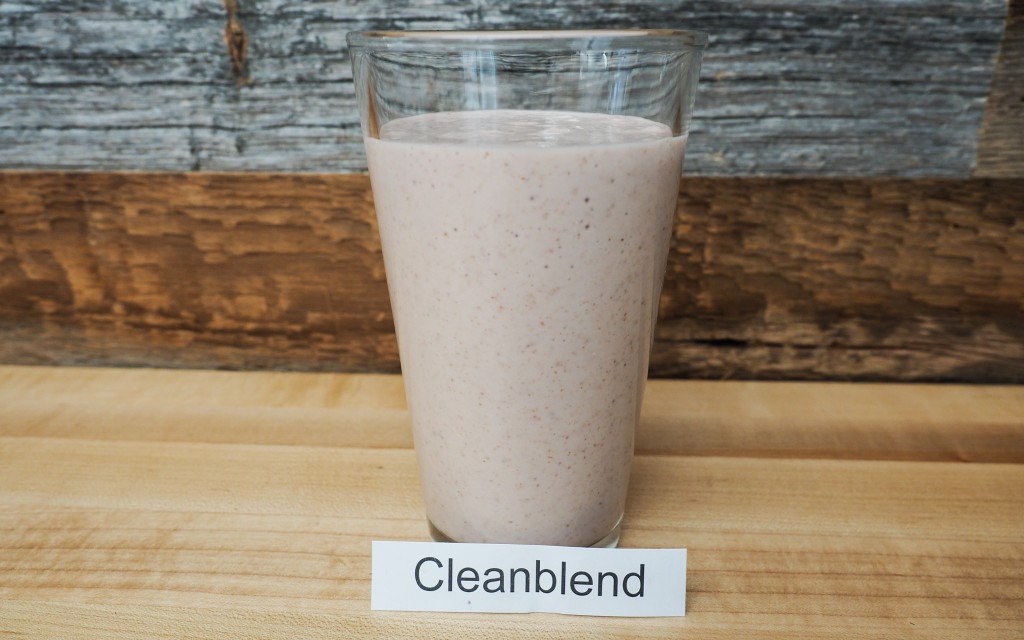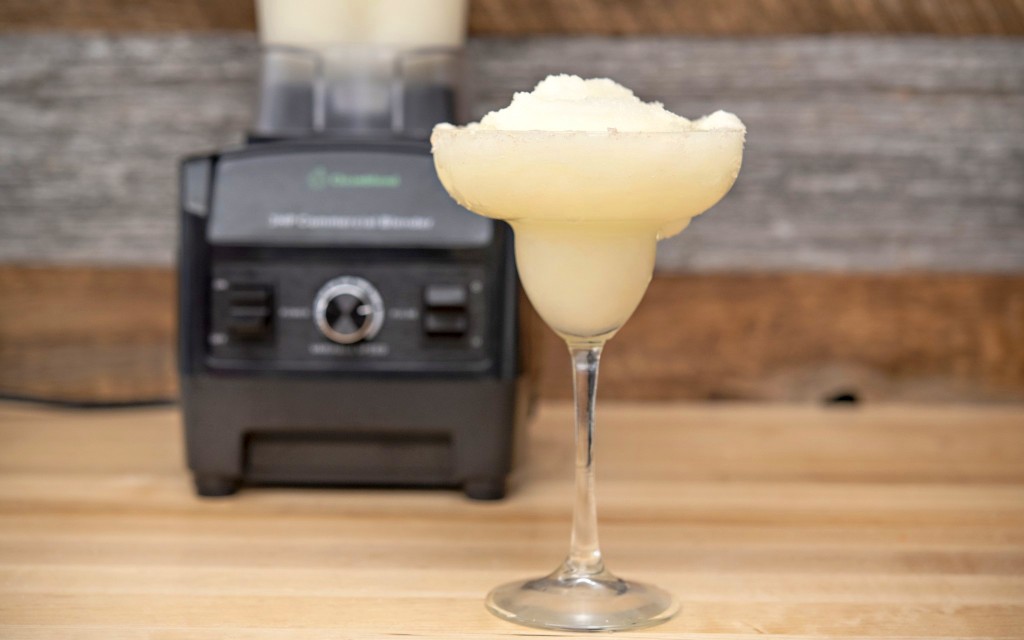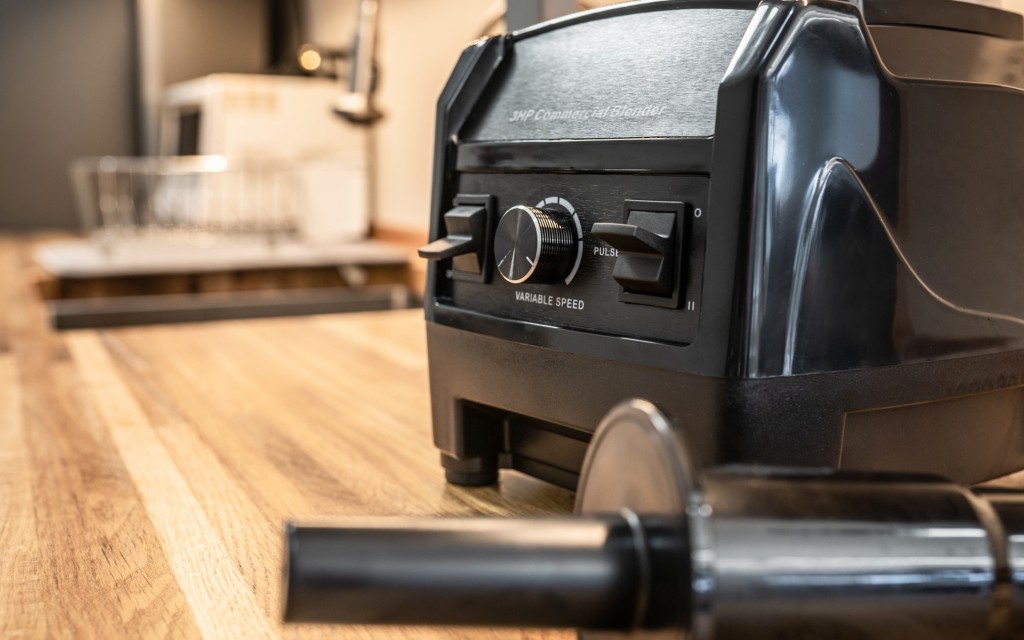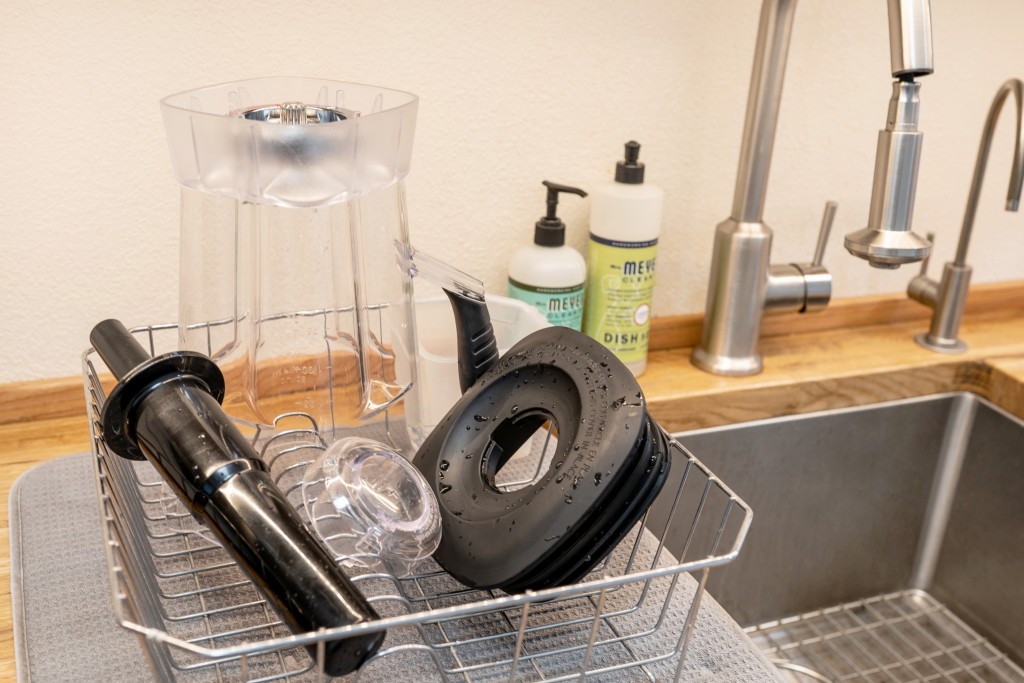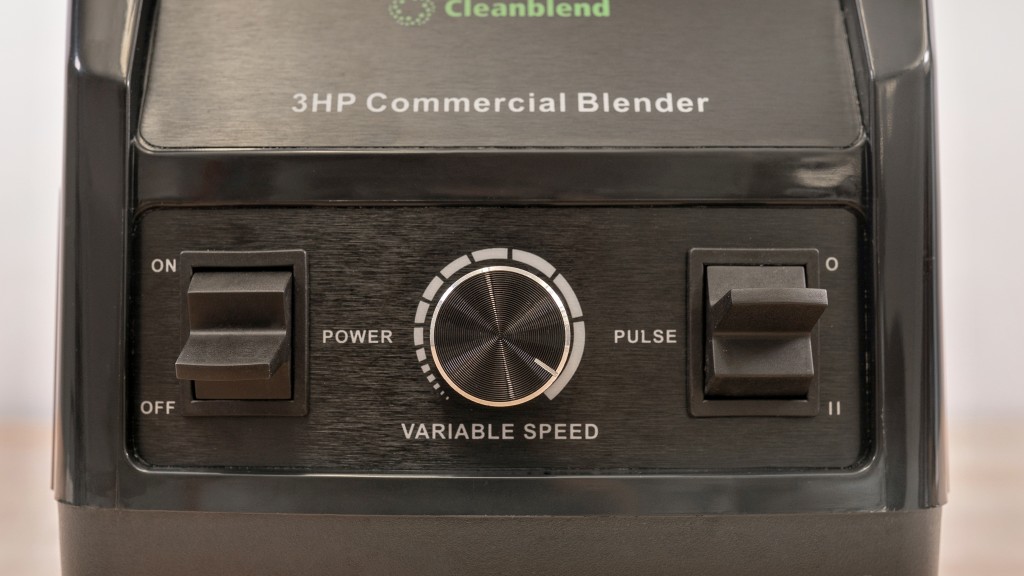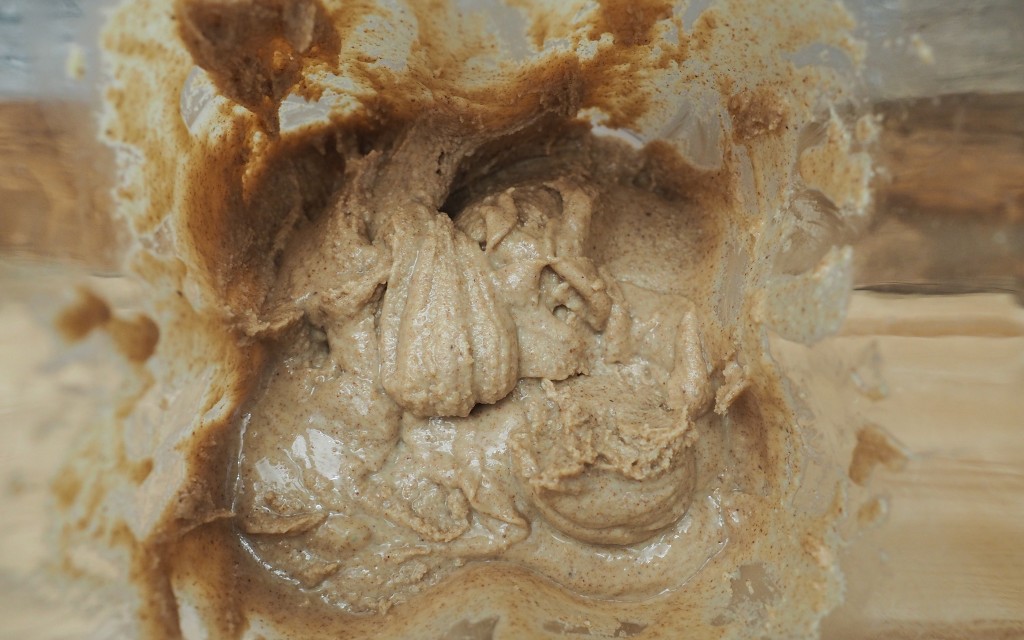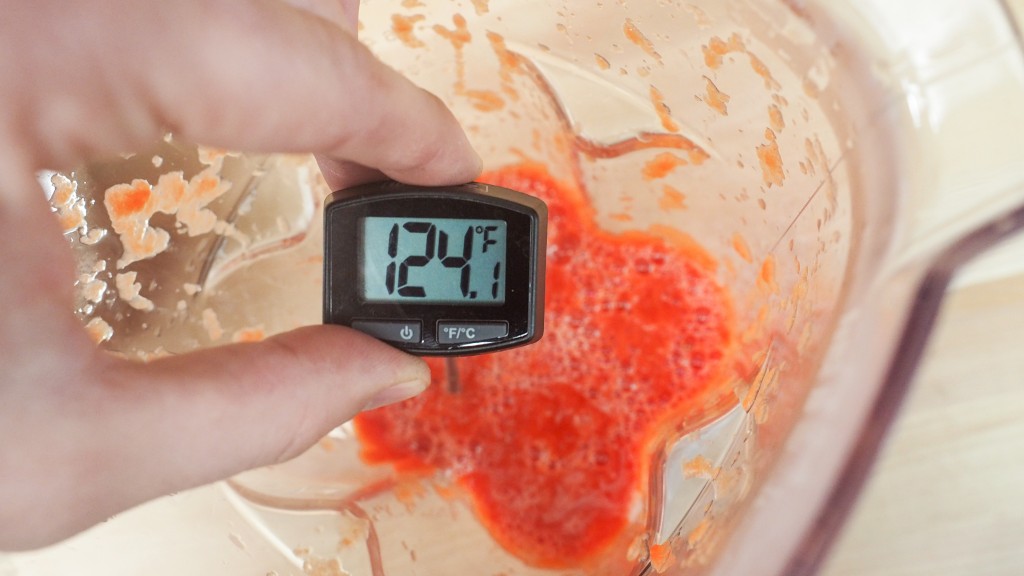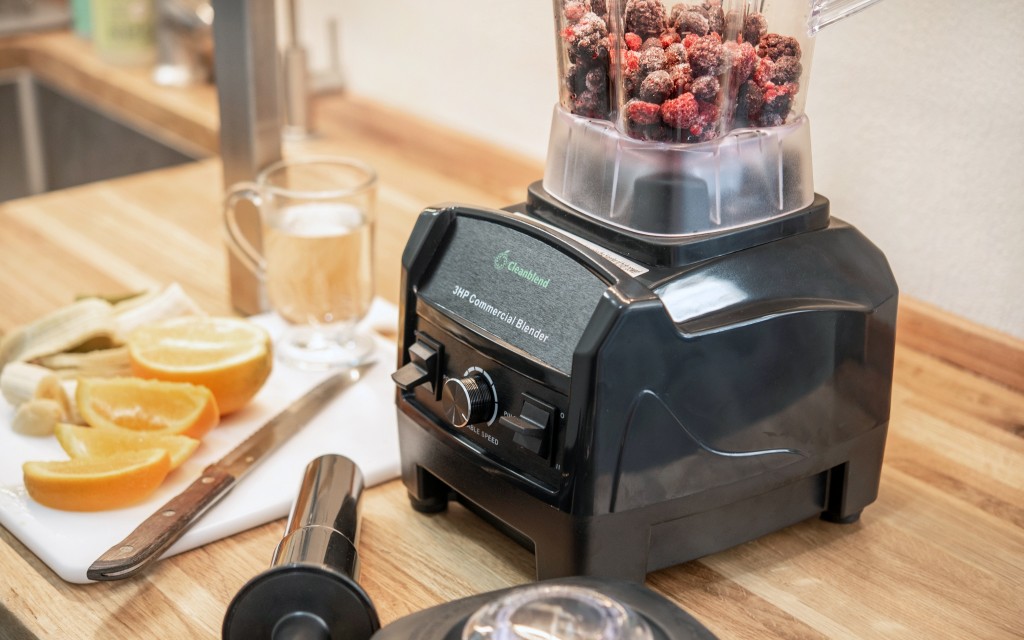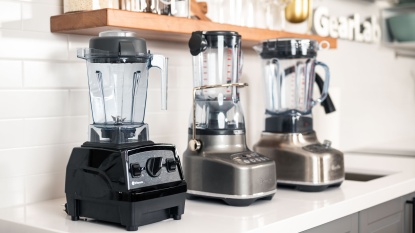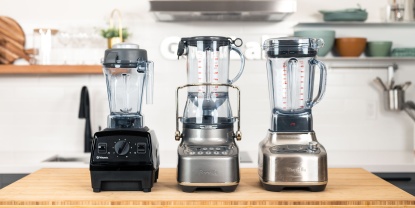Cleanblend Commercial Blender Review
Our Verdict
Compare to Similar Products
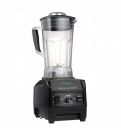 This Product
Cleanblend Commercial Blender | |||||
|---|---|---|---|---|---|
| Awards | |||||
| Price | $180 List $168.97 at Amazon | $400 List $399.01 at Amazon | $130 List $81.16 at Amazon | $120 List $89.99 at Amazon | $200 List $199.95 at Amazon |
Overall Score  |
|||||
| Star Rating | |||||
| Bottom Line | While this model performed quite well in all of our metrics, there are other products that did far better overall for a similar price | We think it's hard to go wrong with this kitchen appliance if you want the best of the best for your blending needs | If you're shopping on a budget, it's hard to go wrong with this high-scoring model | A blender with a pitcher fit to make many drinks, great for smoothies and margaritas but not so great for flour grinding or making soup | The easy user interface and awesome smoothie performance are where this blender shines, but it isn't suitable for all pureeing and grinding needs |
| Rating Categories | Cleanblend Commerci... | Cuisinart Hurricane... | NutriBullet Blender | Ninja Professional... | Breville Fresh & Fu... |
| Smoothies (30%) | |||||
| Ice (20%) | |||||
| Convenience (20%) | |||||
| Pureeing (15%) | |||||
| Grinding (15%) | |||||
| Specs | Cleanblend Commerci... | Cuisinart Hurricane... | NutriBullet Blender | Ninja Professional... | Breville Fresh & Fu... |
| Model Number | Commercial Smoothie Blender | CBT-2000 | ZNBF30400Z | BN701 | BBL620SIL1AUS1 |
| Power | Peak 3.0 HP | Peak 3.5 HP | 1.6 HP | Peak 1.9 HP | Peak 1.5 HP |
| Dimensions | 18" x 15" x 13" | 10.05" x 8.50" x 17.55" | 16.5" x 9.8" x 7.5" | 6.75" x 9" x 17.5" | 8.5" x 6.9" x 17.3" |
| Pitcher size | 64 oz | 64 oz | 64 oz | 72 oz | 50 oz |
| Dishwasher safe | Yes | Yes | Pitcher; top rack only | Yes | Yes. Top rack only for lid. |
| Accessories | Yes
|
No | Yes
|
No | Yes
|
| Digital Timer | No | Yes | No | Yes | Yes |
| Presets | None | Yes,
|
None | Yes, 3
|
Yes, 9
|
| Measured Soup Temperature | 124 | 155.4 | 152.1 | 74 | 84 |
Our Analysis and Test Results
Performance Comparison
In our quest to find the best blenders, we compared and researched dozens of different models and brands, then picked out the ones that showed the most promise to purchase for head-to-head testing. We scored each appliance in five weighted testing metrics, with the Cleanblend's results described in the following sections.
Smoothies
The main use for many people and our most important set of tests overall, our smoothie metric is responsible for 30% of the final score for each blender. We made four different drinks in each blender — a green smoothie, fruit & oat smoothie, berry smoothie, and an Oreo malt — and scored the taste and consistency of each one to determine each blender's overall smoothie score. The Cleanblend delivered a fairly impressive set of blended beverages.
This appliance got off to a great start with the fruit & oat smoothie, which is one of the more difficult drinks of the group due to the lack of liquid. We had to stir the ingredients once at the start, but the Cleanblend easily mixed them without issue after that. We appreciated that it didn't heat up the drink when blending, but the overall texture was grainier than the top models.
It also did exceptionally well with the Oreo malt, though it needed a bit of encouragement at the start to get the ingredients blending, and the texture was just a tiny bit grainy.
The Cleanblend struggled a bit more with the green smoothie, which ended up being very pulpy. A few unblended chunks of pineapple were caught in the sieve than with other products. However, the taste was great.
It did about the same with the berry smoothie. The Cleanblend struggled the most with the berries, and we definitely had to use the tamper until everything was partially liquefied.
The final drink had quite a few fruit skins, and tons of whole strawberry seeds were caught in the sieve. Generally, only the top-tier blenders could completely obliterate fruit seeds.
Ice
Following smoothies, we moved on to our ice metric. This metric is responsible for 20% of the final score for each blender and is based on how well each appliance made a margarita and crushed ice. The Cleanblend delivered another solid set of results here.
This blender made an excellent margarita, easily crushing up the ice without any issues and producing a much more liquid margarita than almost any other product. Unfortunately, we didn't think the final drink was as homogeneous as some of the other beverages made by the top blenders. The Cleanblend's blades just don't make the same kind of vortex that other models do.
It also did very well crushing ice without any liquid. It wasn't terribly effective if we just ran the blender continuously, but it did a fantastic job if we pulsed it — the blade never even slowed down when cutting through the ice cubes.
Convenience
Our next metric focused on how it is to actually use each blender. We compared the ease of cleaning each product, the different preset functions and settings available, and if the lid is easy to take on and of for this metric. Convenience accounts for 20% of the final score for each appliance.
The pitcher, lid, and blade of the Cleanblend are all dishwasher safe, making it one of the easiest to clean. If you don't have a dishwasher, this blender is also quite easy to clean by hand. The lid is one of the easiest to clean, with no tiny nooks or crannies that trap food. Food doesn't frequently get stuck to the pitcher's sides, and the pitcher and blade are both reasonably easy to clean, although you don't have a ton of room to maneuver around the blades.
There is plenty of ventilation for this product to adequately dry when placed on the base, and the text is clear and easy to read on the controls. However, we missed the presence of a digital timer or any preset functions.
Finally, the lid is very easy to take on and off, almost never sticking.
Pureeing
For 15% of the overall score, we rated how well the Cleanblend could puree different types of food. Specifically, we looked at how well it could make nut butter and tomato soup, and whether it can effectively be used to heat up soup to serving temperature. It scored slightly above average for this metric.
Starting off, the Cleanblend did quite well at creating nut butter — one of the hardest challenges we put before each blender. It took about 8 minutes for the Cleanblend to make an acceptable nut butter, though it took a bit of convincing to get it started. It came out a little dry and chalky, but this could probably be remedied with some extra oil — something the best models didn't require.
It struggled a little with tomato soup, leaving behind plenty of leftover pulp and an overall thicker soup that didn't pour through the sieve very well.
For the last test of this metric, the Cleanblend delivered a mediocre performance. Though it heated up the tomato soup, it never really got it to serving temperature, producing a rather lukewarm soup.
Grinding
For the final round of tests, we looked at how the Cleanblend handled harder types of foods - namely by milling corn, making powdered sugar, and grating hard parmesan cheese. This trio of tests is responsible for the remaining 15% of this blender's score.
This blender got off to a great start, making some excellent powdered sugar with almost no leftover granules.
It struggled a bit with the parmesan cheese, leaving a ton of larger pieces and failing to achieve any semblance of a uniform size.
It did a little better than average when we tried to make cornmeal. It milled most of the kernels, but the resulting meal wasn't very consistent, and a decent number of larger pieces didn't make it through the sieve.
Should You Buy the Cleanblend Commercial Blender?
The Cleanblend is a decent blender, but the bottom line is that there are better blenders out there for similar prices.
What Other Blenders Should You Consider?
If the Cleanblend falls within your price range, we would instead recommend taking a look at the NutriBullet Blender. It's a bit cheaper and bested the Cleanblend in most metrics, particularly the smoothies, ice, and pureeing tests. If money is no object and you just want the best blender your money can buy, check out the Vitamix A2500 Ascent Series or Cuisinart Hurricane Pro.


